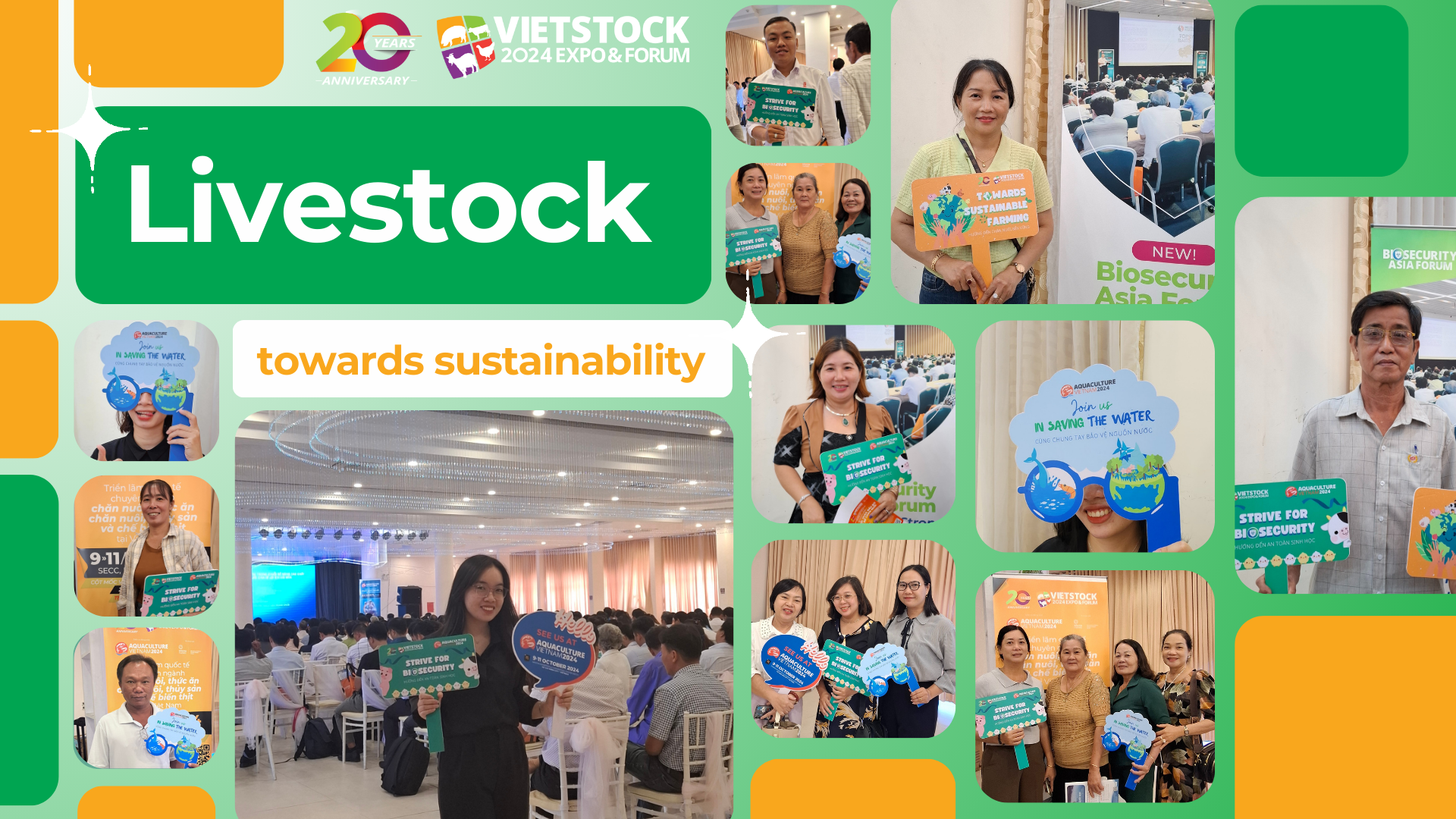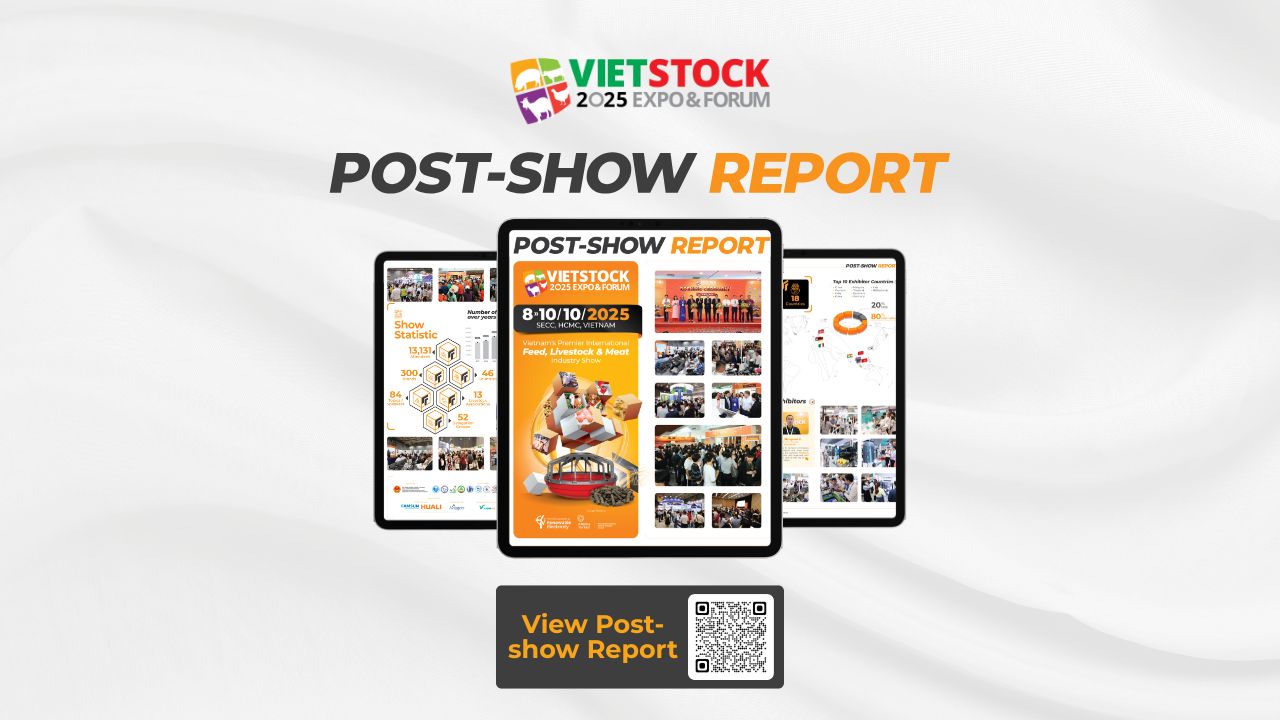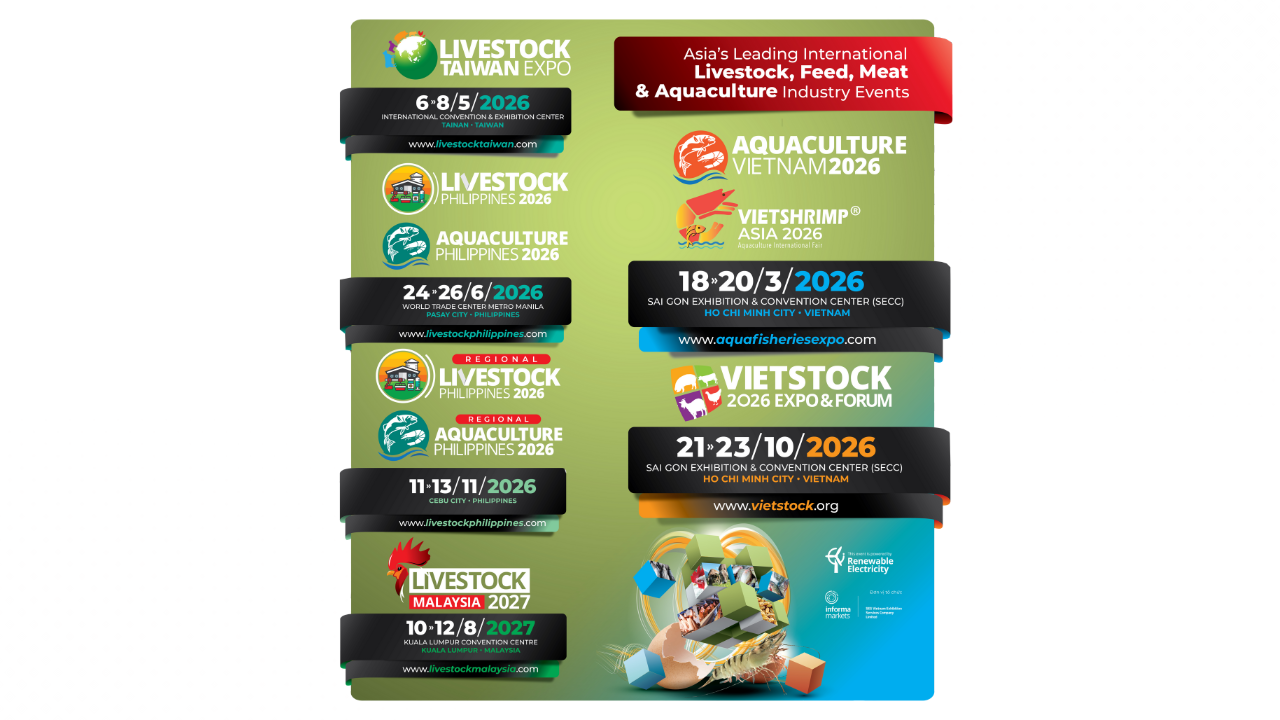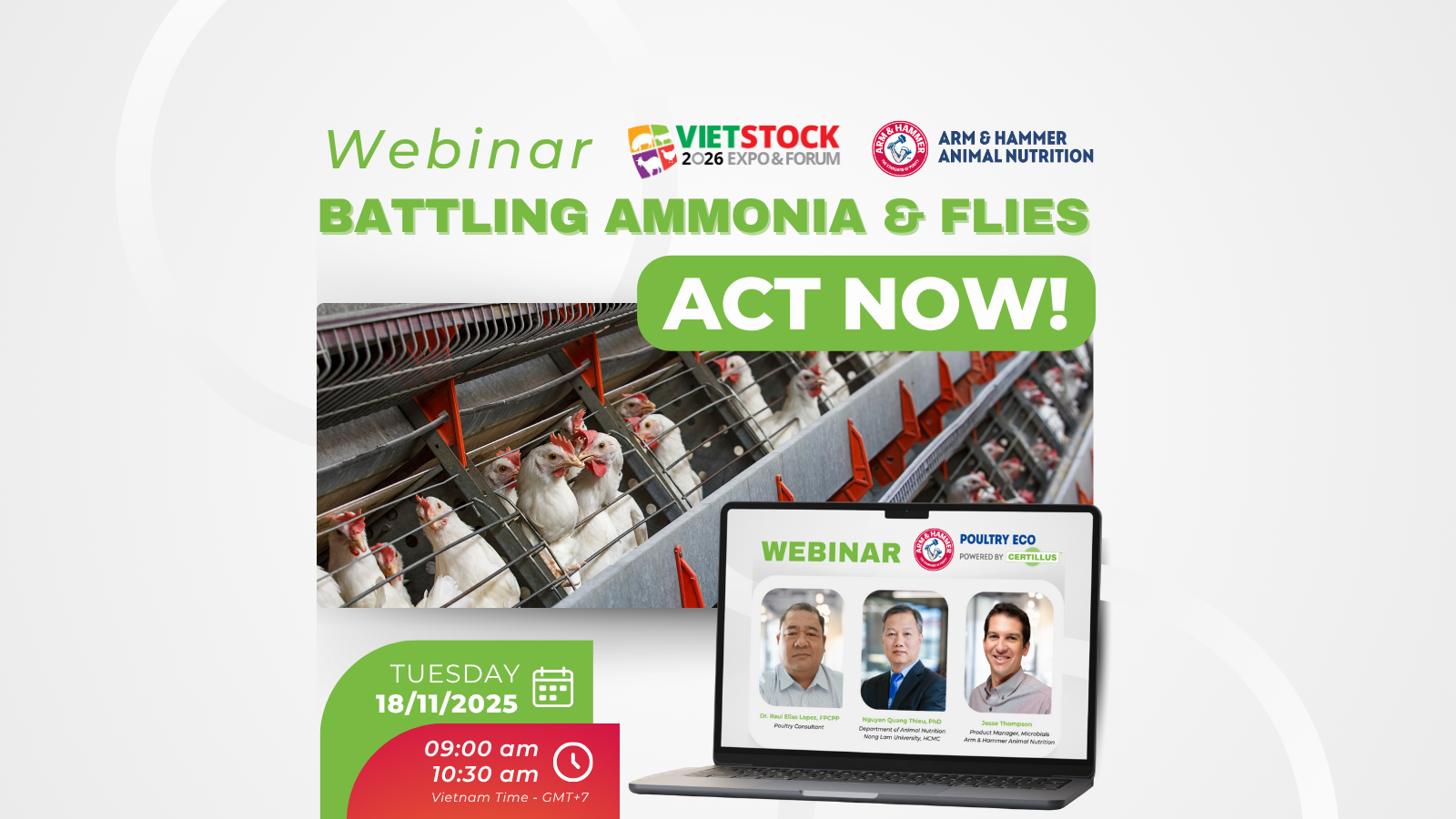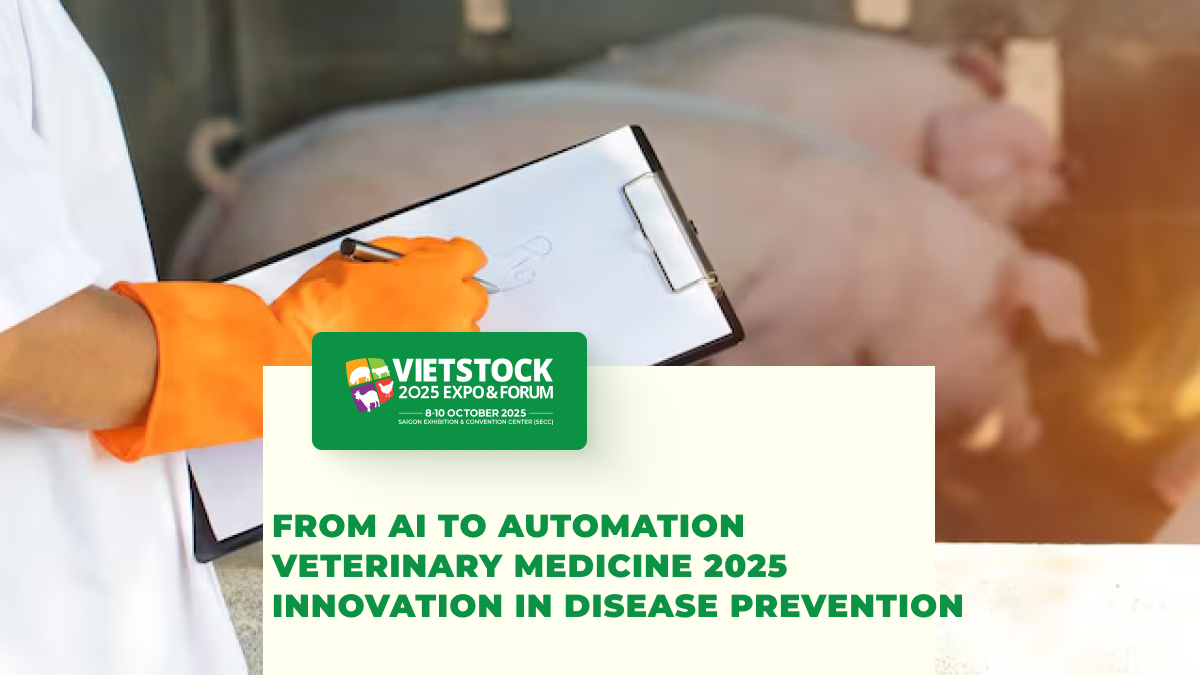BIOSECURITY PRACTICES IN POULTRY FARMS
Biosecurity in chicken farming is a systematic approach to ensure the safety and hygiene of chicken farming. By following strict protocols, farmers can maintain healthy flocks, prevent diseases, and enhance food safety. Additionally, biosecurity practices improve the quality and consistency of chicken products, leading to higher economic efficiency.
Emerging trends in poultry biosecurity
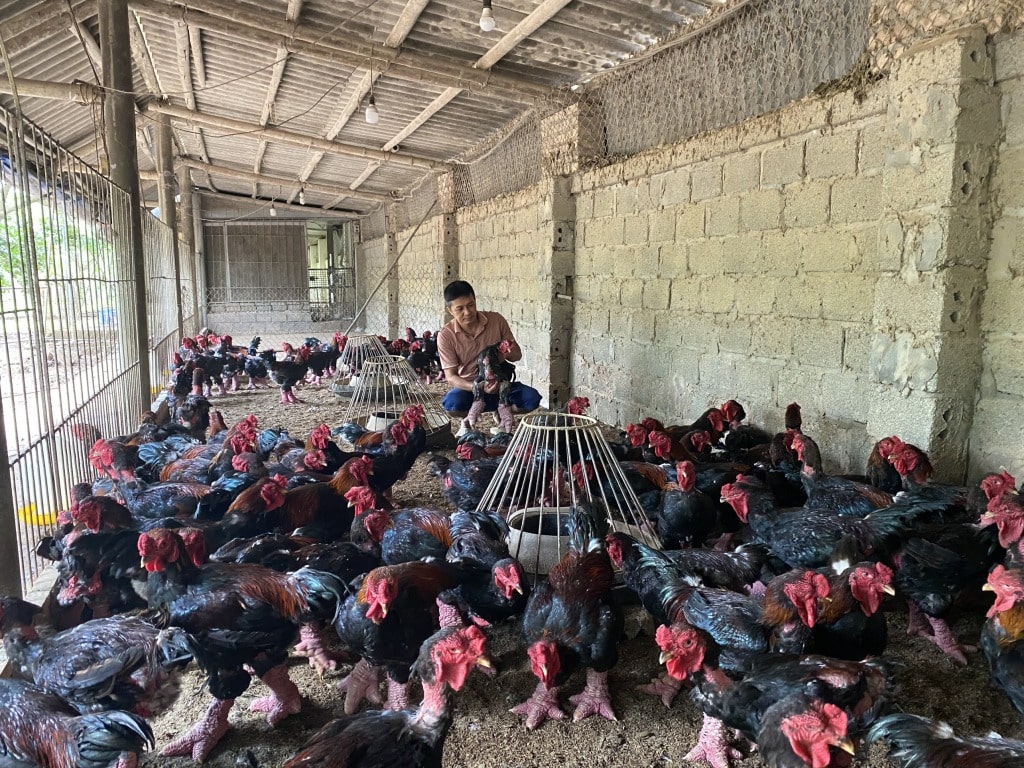
Researching and applying biosecurity measures is a process of identifying and using strategies to prevent and control diseases in livestock, thereby ensuring the safety of both animals and consumers.
3 key benefits of adopting biosecurity measures in livestock production:
- Improving chicken health: Minimizing disease incidence and mortality rates, resulting in healthier and more productive chickens.
- Ensuring product quality: Chicken meat and eggs meet food safety standards, free from antibiotic residues and harmful chemicals.
- Increasing farming productivity: Chickens raised using biosecurity methods generally have faster growth rates, better meat quality, and higher egg production.
Step-by-step guide to poultry biosecurity
To build an effective biosecure chicken farming system, focus on the following factors:
- Establish a solid foundation and prepare before starting farming.
- Nurturing a healthy flock through scientific management practices.
- Ensuring proper harvesting for optimal product quality.
Step 1: Building a solid foundation: Pre-farming preparations
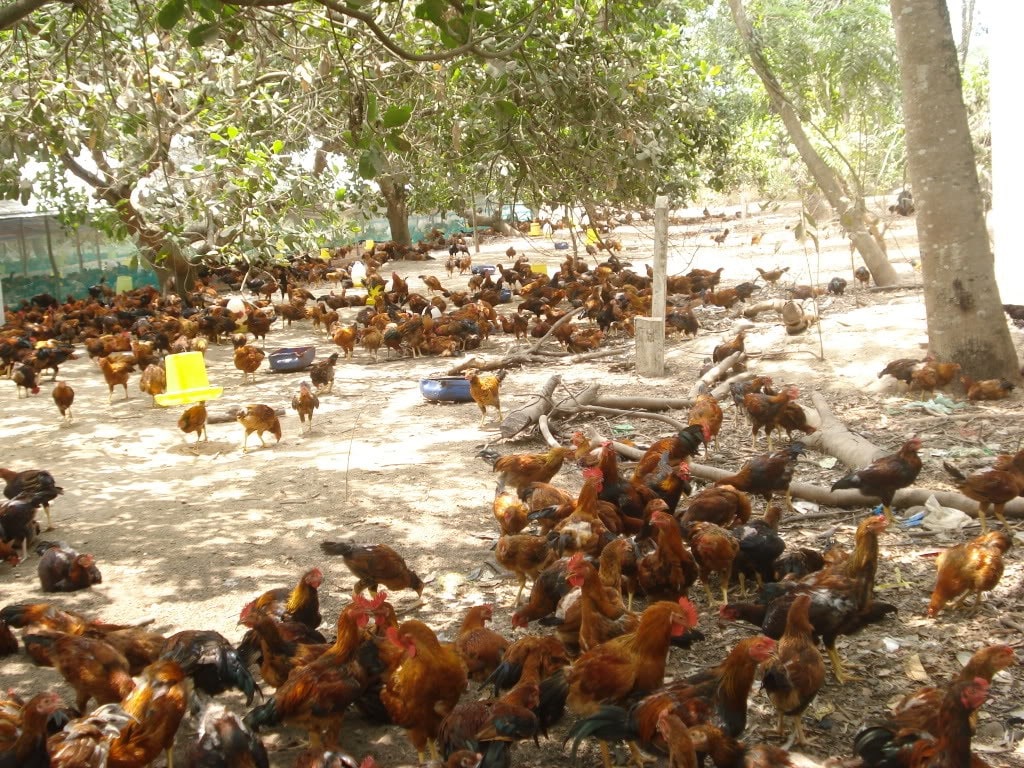
In this phase, farmers should focus on selecting suitable chicken breeds and preparing a safe and secure poultry house to create an ideal living environment for their chickens.
The key to success: Selecting the right chicken breed
Selecting the right chicken breed is the first and most crucial step in chicken farming. The chosen breed directly impacts the farm’s productivity and economic efficiency.
Popular breeds include:
- Local chickens are favored for their delicious meat and good disease resistance.
- Hybrid chickens grow quickly and have high egg yields.
- Colored feather chickens have attractive feather colors and are suitable for commercial purposes.
Factors such as the farming purpose, local climate, and the breed’s adaptability should be carefully evaluated. A suitable breed should exhibit strong disease resistance, be easy to take care of and ensure healthy development and high productivity.
Ensuring a secure chicken farming environment: The key to healthy chickens
To ensure optimal growth and productivity in chicken farming, preparing a safe and suitable chicken coop is crucial. The location of the chicken coop should be carefully selected, away from residential areas to minimize disturbances to residents and reduce the risk of disease transmission.
The chicken coop should also be situated far from pollution sources such as landfills, sewers, or factories, and must be well-ventilated, not waterlogged, and maintained in a clean condition.
Additionally, the chicken house design should prioritize ventilation systems to ensure a constant flow of fresh air, preventing suffocation and reducing the risk of disease. The drainage system should also be designed efficiently to prevent dampness and the growth of bacteria and mold.
The stocking density should be adjusted appropriately to avoid overcrowding, allowing chickens enough space to move comfortably and develop well.
Essential preparations for a safe chicken coop
Step 1: Choosing the coop’s location:
- Ensure the location is far from residential areas and pollution sources.
- Guarantee a spacious and clean environment.
Step 2: Designing the coop:
- Implement a good ventilation system.
- With an efficient drainage system.
- Maintain an appropriate stocking density.
Step 3: Regular cleaning and disinfection:
- Thoroughly disinfect the entire coop before introducing the flock.
- Conduct regular cleaning and sanitation.
With careful and proper preparation, chicken farming can become more efficient and safer than ever, avoiding unnecessary risks and helping farmers optimize costs and increase income.
Step 2: Nurturing Healthy Chickens: Taking care and management
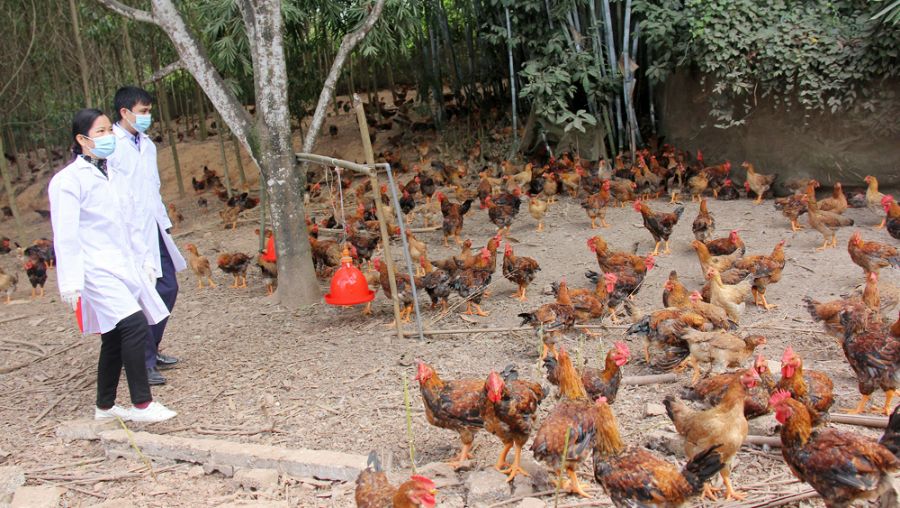
Raising healthy chickens requires attentive care and management, ensuring sufficient nutrition, maintaining good health, and preventing diseases. This process involves three key components: feed and water, attentive care, and effective disease prevention.
Feed and Water: Sufficient nutrition for each growth stage
To ensure good development, providing safe and nutritious food and water is crucial. The food source must be hygienic, nutritious, and tailored to the specific needs of each growth stage of chickens. Diets for chicks differ from those for mature chickens and laying hens.
- Feed ingredients such as corn, rice bran, wheat, soybean meal, fishmeal, vitamin premix, bone meal, and minerals should be clean, and free from mold, lumps, and contaminants.
- Mixed feed pellets should have clear labels, transparent about the source and expiration date. Only buy feed from reputable manufacturers.
Feed and water should be stored in a cool, dry place to prevent mold and contamination. Ensuring that food and water are always fresh and clean helps the chickens stay healthy and enhances their disease resistance.
The importance of proper care in maintaining chicken health
Proper care has a direct impact on the chicken’s health. Regular cleaning of the coop helps to remove waste and leftover feed, and reduce disease risks. Constantly monitoring the health of the chickens allows for the early detection of any signs of illness, enabling timely treatment.
To ensure the health of your flock, it is essential to vaccinate them according to the recommended schedule. Additionally, supplementing their diet with essential vitamins and minerals promotes healthy growth and a strong immune system. Proper care not only improves the health of your chickens but also increases overall poultry production.
Effective disease prevention: Preventing diseases, protecting chicken flock
Effective disease prevention is crucial in chicken farming, protecting the farmer’s livelihoods. Applying strict biosecurity measures helps block the entry of external disease-causing agents. Combining with using veterinary drugs according to veterinarians’ guidance helps treat common poultry diseases promptly and effectively.
Moreover, prompt isolation of sick chickens is essential to prevent the spread of disease. Proper disease prevention practices can significantly reduce the risks of disease and ensure the health of chicken flocks.
Step 3: The harvesting process: Ensuring high-quality yield
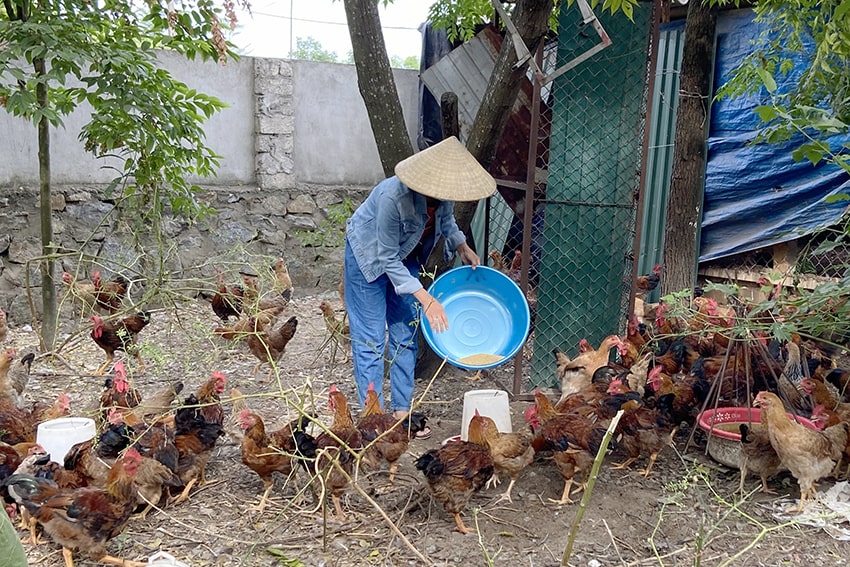
Proper harvesting is the final step in the farming process, ensuring high-quality and safe products for consumers. To achieve this goal, farmers must adhere to strict protocols and standards throughout the harvesting process.
Harvesting at the right time: A crucial factor affecting product quality
The timing of harvesting directly impacts the quality of chicken products. Chickens should be harvested at the optimal weight and age to ensure the best meat quality, not tough or too soft.
Before harvesting, chicken farmers should conduct health checks to ensure that chickens are disease-free. Sick chickens should be handled separately to prevent disease spread and maintain product quality. These measures help guarantee that the final product meets food safety standards.
Essential steps in the harvesting process
The harvesting process must be carried out carefully and scientifically. The following are essential steps to follow:
Step 1: Prepare tools and equipment:
- Ensure that all harvesting tools and equipment are thoroughly cleaned and disinfected before use.
- Use specialized harvesting equipment to ensure the process is quick and efficient.
Step 2: Harvesting chickens:
- Handle chickens gently to avoid stress or injury.
- Transfer chickens to a separate, clean, and well-ventilated area for harvesting.
Step 3: Post-harvest handling:
- Clean and process the chickens according to standard procedures, ensuring food safety and hygiene.
- Store chickens at the appropriate temperature to maintain freshness.
Step 4: Quality control:
Post-harvest quality control is a crucial step in the chicken farming process. Farmers must conduct thorough quality checks to ensure that products meet food safety and nutritional standards. These checks include examining freshness, color, smell, and microbiological indicators.
Quality control procedures include:
- Checking freshness and color: Ensure the chicken meat has a bright color, is not bruised, and has no foul smell.
- Microbiological criteria: Ensure the product is free of harmful bacteria, ensuring consumer safety.
- Product preservation: Products after inspection must be stored at appropriate temperatures to maintain freshness and nutrition.
Product quality management and monitoring:
- Regular inspections: Check product quality regularly to detect any issues early.
- Proper storage: Ensure products are stored under appropriate conditions to prevent spoilage or quality degradation.
- Handling issues: When product quality issues are detected, take timely measures to ensure food safety.
Proper harvesting and quality assurance not only enhance product value but also contribute to building the farm’s reputation and brand name. By following these careful steps, farmers can ensure the highest quality of their chicken products.
Vietstock 2024 – Support the sustainable development of Vietnam’s livestock industry
To enhance knowledge and skills related to biosecurity and sustainable livestock development, chicken farmers are encouraged to visit Vietstock Expo & Forum 2024. By participating in Vietstock, farmers will gain valuable insights into the direction, methods, and implementation of biosecurity practices, which are the core value for sustainable development in livestock industry. This is a new highlight should not to be missed at this year’s exhibition.
With two decades of being a companion to the livestock industry, Vietstock deeply understands the market and the needs of businesses and farms in livestock and aquaculture. In collaboration with the Department of Livestock Production (Ministry of Agriculture and Rural Development) and various livestock and aquaculture associations, Vietstock brings the latest knowledge, trends, and techniques, helping the livestock industry overcome challenges and achieve sustainability.
Highlight activities at Vietstock 2024 include:
- Technologies, products & solutions showcase: Visit booths showcasing cutting-edge products and services from leading companies in the livestock and aquaculture industry.
- Conferences & Technical Seminars: Participate in conferences and seminars to stay updated on the latest industry trends and learn about new technologies and techniques.
- Bus-in program: Participate in group delegation support programs, providing chicken farmers with access to new technologies and solutions, as well as opportunities to network with experts.
Additionally, Vietstock 2024 offers many other exciting activities, providing farmers with opportunities to network, learn, and grow their businesses.
Particularly at the Biosecurity Asia Forum, the forum will focus on the directions, methods, and implementation of biosecurity practices in livestock farming, contributing to the sustainability of the industry.
- Pre-register : https://ers-vn.informa-info.com/vsv24
- Book a stand: https://www.vietstock.org/dat-gian-hang/
If you need information related to the upcoming exhibition, please contact us:
- Exhibiting: Sophie Nguyen – [email protected]
- Group Delegation Support: Phuong – [email protected]
- MarCom Support: Anita Pham – [email protected]
Join us in Vietstock 2024 to expand your knowledge, network with industry peers, and discover new opportunities in the poultry industry!


